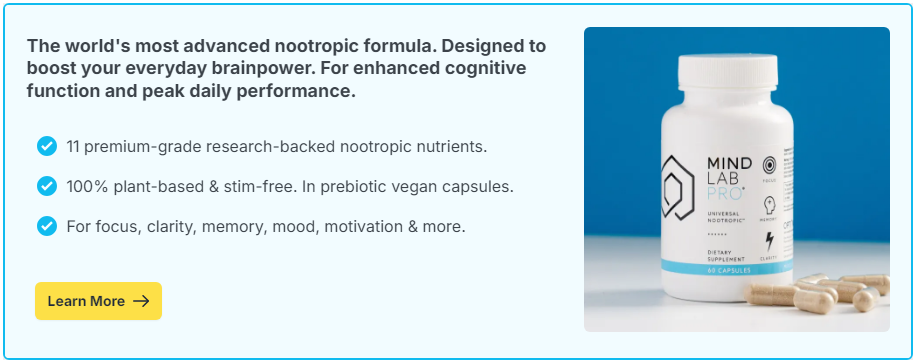
Your brain is incredible. It’s not a static machine. It’s not limited to the wiring you were born with. Thanks to neuroplasticity, your brain is constantly changing – rewiring, adapting, strengthening connections with every thought, habit, and experience.
That means you can learn new skills, shift old habits, and sharpen your thinking at any age. The potential is enormous. But there’s a catch:
Most people waste it.
Why? Because while your brain is designed for novelty and challenge, modern life often provides the opposite: repetition, convenience, and mind-numbing routine. If your days all blur together, if your mind is on autopilot, if you rarely do anything that scares or excites you – you are letting neuroplasticity go to waste.
Contents
The Brain’s “Use It or Lose It” Law
Neurons work like muscles. The more you use certain neural pathways, the stronger and faster they become. The less you use them, the weaker they get.
This is neuroplasticity at work. It’s how you learned to speak, read, drive, and master your job. But it also works against you: if you keep doing the same things in the same way, your brain becomes excellent at… sameness.
The result? Stagnation. Your problem-solving slows. Your creativity dulls. Your memory slips. You feel like you’re coasting – or worse, declining.
Boredom Is Not Harmless
We treat boredom as an inconvenience. But in neurological terms, it’s a sign your brain is under-stimulated.
And that’s a problem. Because without challenge, your brain doesn’t get the signal to grow.
Modern life is full of “soft” boredom:
- Rewatching the same shows
- Doing tasks you’ve mastered long ago
- Scrolling social media to pass time
- Living on autopilot, day after day
This doesn’t trigger growth. It triggers decay. You’re not just bored – you’re training your brain to be less adaptive.
What Neuroplasticity Actually Needs
To grow and adapt, your brain needs challenge and novelty. It needs signals that say: “We’re doing something new here. Better strengthen some connections.”
That doesn’t mean you need to quit your job and move to another country. But it does mean your daily experience should include at least some of the following:
- Learning new skills (language, instrument, hobby)
- Solving unfamiliar problems
- Engaging in real conversations with different perspectives
- Physical movement, especially coordination-based (like dancing or martial arts)
- Making decisions that require effort or uncertainty
Each time you stretch outside your comfort zone, you activate neural networks in new ways. That’s how you stay sharp. That’s how you keep evolving.
The Biological Side of Plasticity
Neuroplasticity isn’t just mental. It’s deeply biological. Your brain needs raw materials to build and reinforce connections. That means:
- Protein: Provides amino acids for neurotransmitters and structural repair
- Omega-3 fats: Critical for cell membrane flexibility and signal transmission
- B vitamins: Essential for energy production and brain signaling
- Magnesium: Modulates NMDA receptors involved in synaptic plasticity
Without these nutrients, your brain may want to adapt – but physically can’t do it well. That’s why even mentally stimulating environments won’t yield full benefits unless your biology is on board.
How Nootropics Help Maximize Neuroplasticity
Want to put your brain’s flexibility to real use? Start with habitual novelty – then consider adding the right brain support.
Certain nootropics are especially well-suited to enhance neuroplasticity by supporting the underlying biology. These include:
- Lion’s Mane Mushroom: Stimulates Nerve Growth Factor (NGF), promoting the growth and repair of neurons.
- Citicoline: Supports membrane synthesis and enhances acetylcholine for learning and memory.
- Bacopa Monnieri: Improves communication between neurons and enhances retention of new information.
- Rhodiola Rosea: Helps the brain adapt to stress so it can grow under challenge instead of collapsing from it.
These ingredients, combined in a formula like Mind Lab Pro, don’t just give your brain a boost. They help your brain adapt faster, learn better, and retain more – especially when paired with effort and new experiences.
Don’t Let a Plastic Brain Go Rigid
Your brain’s ability to change is one of the most powerful forces in your life. But it’s not automatic. It doesn’t flourish under boredom, monotony, or emotional sedation.
It thrives under stimulation. It grows with struggle. It adapts when challenged.
That means if you want to stay sharp, creative, and emotionally agile, you can’t afford to live a life that never surprises you. You have to break patterns, chase curiosity, and feed your brain the raw materials it needs to evolve.
Neuroplasticity isn’t a buzzword. It’s your brain’s way of saying, “Let’s keep growing.” But most people unknowingly train themselves into stagnation with routines that are too easy, too passive, and too predictable.
You don’t have to turn your life upside down. But you do have to stop hitting the repeat button every day. Learn something new. Take a different path. Feed your brain. And if you want to maximize the payoff, support those efforts with smart nootropics that fuel growth from the inside out.
Because if your brain can rewire itself at any age – why waste that on a life that never changes?

